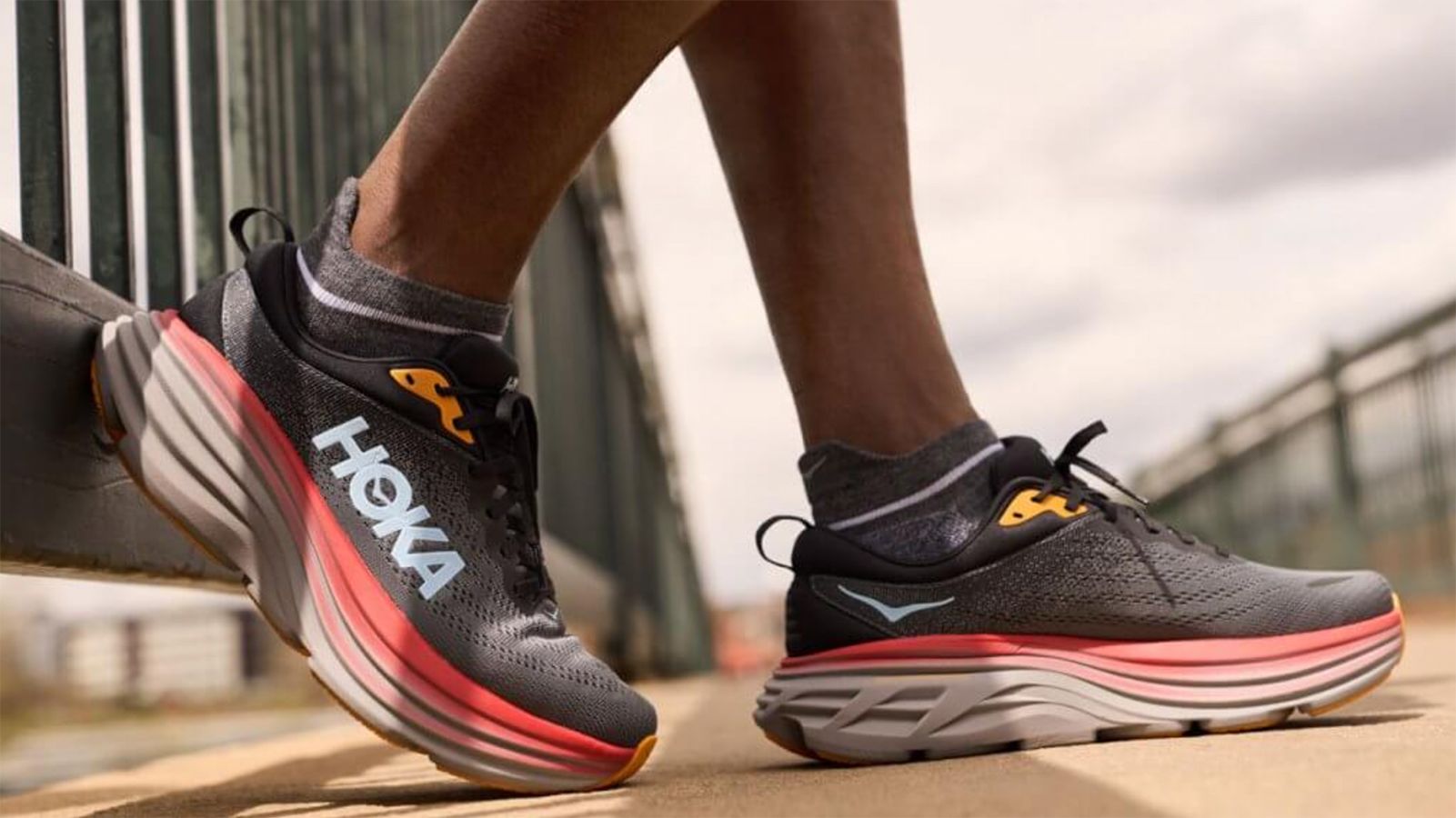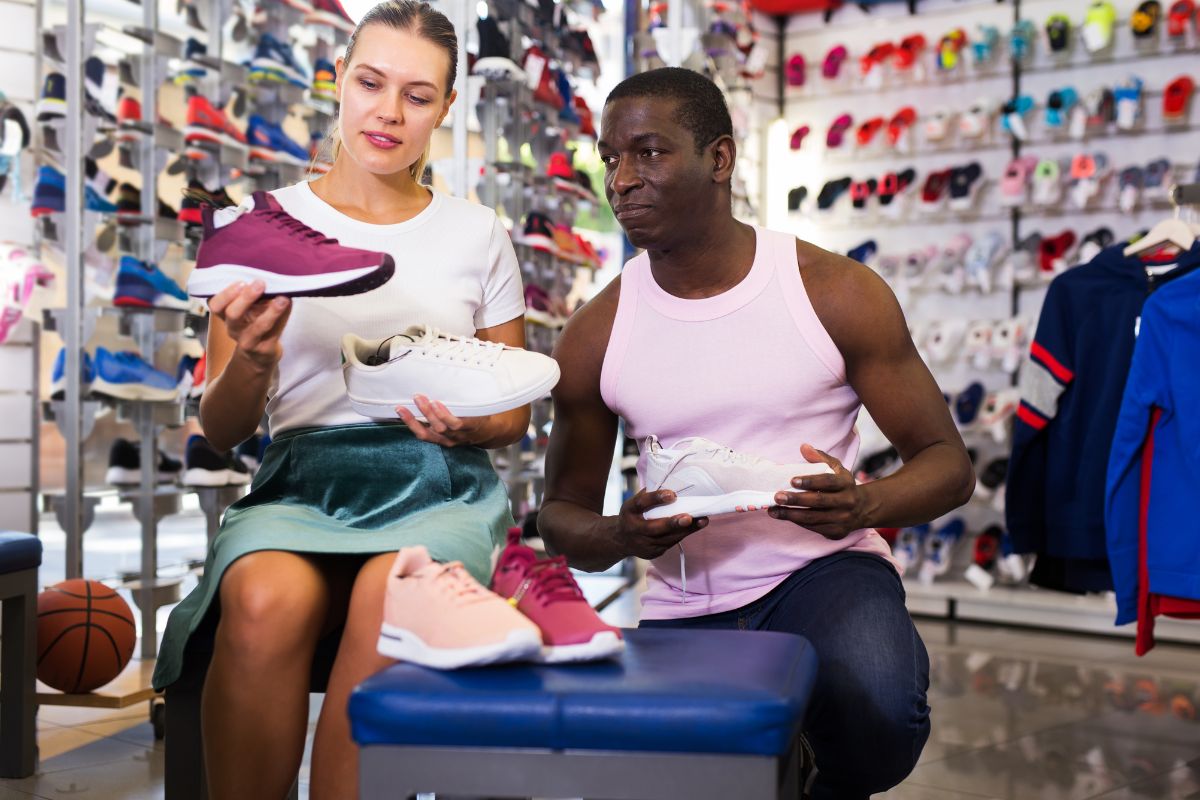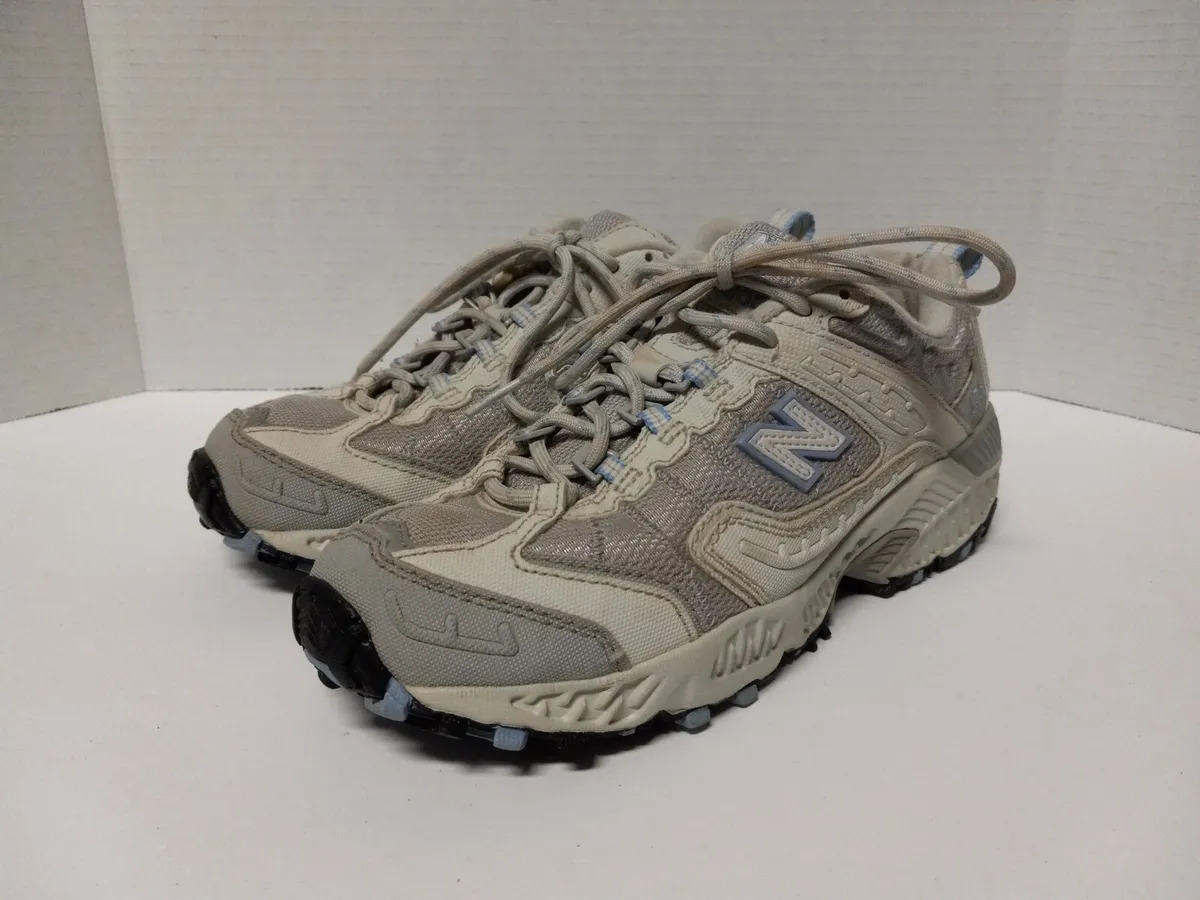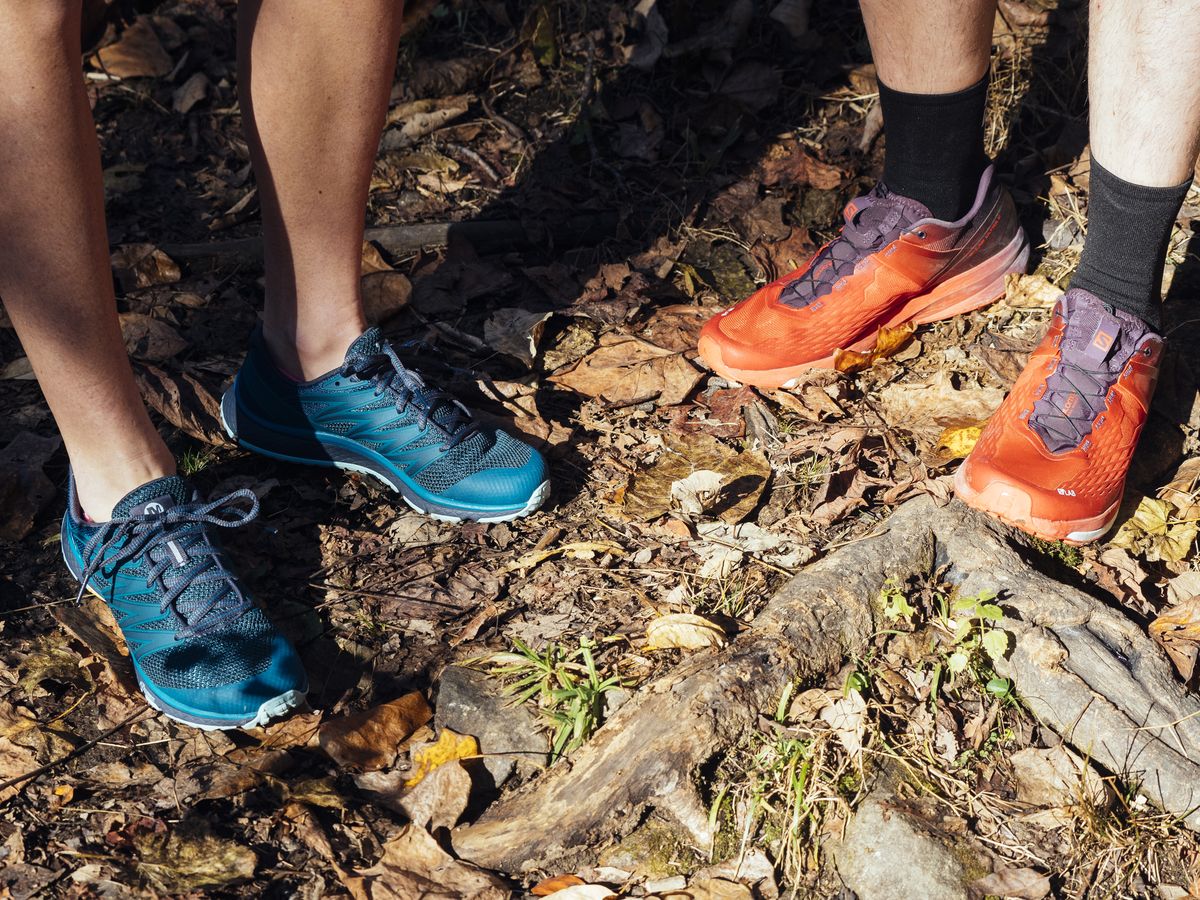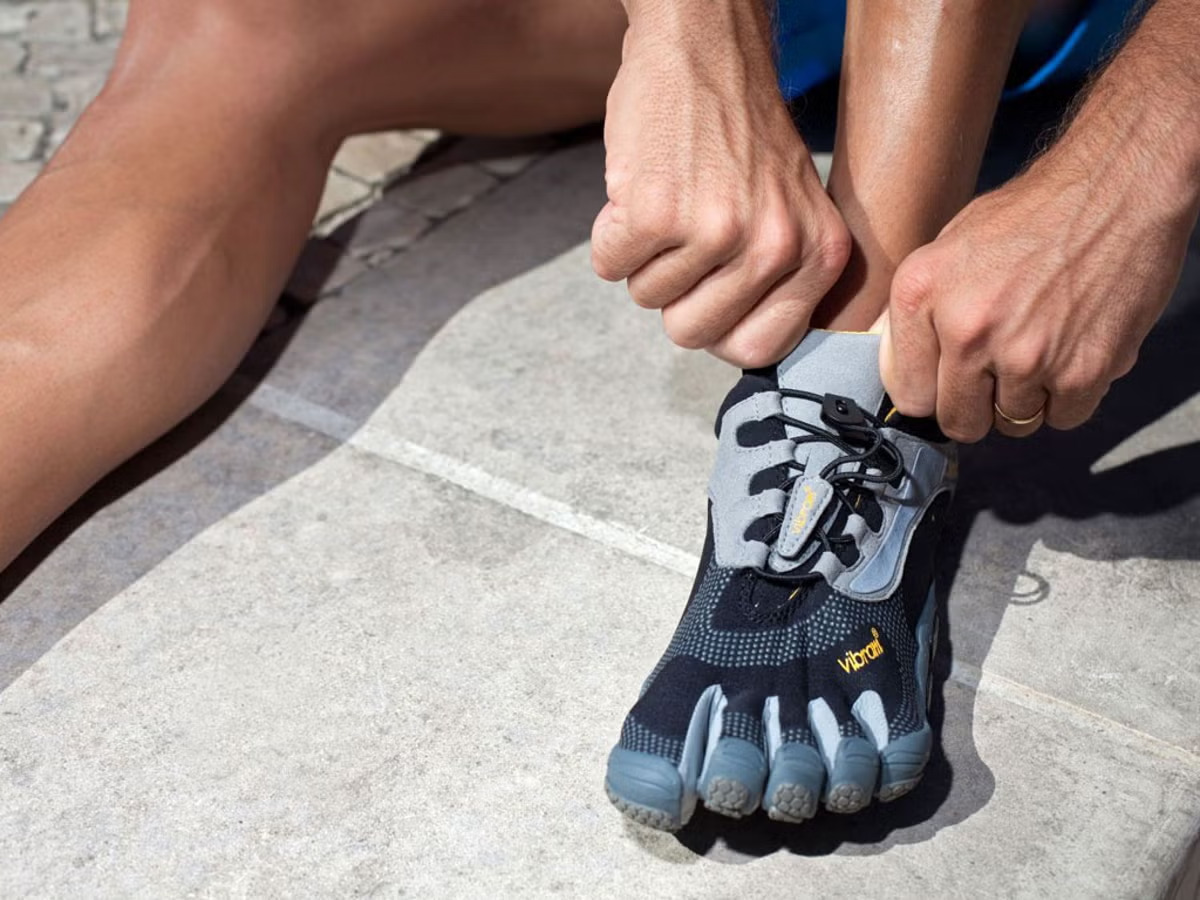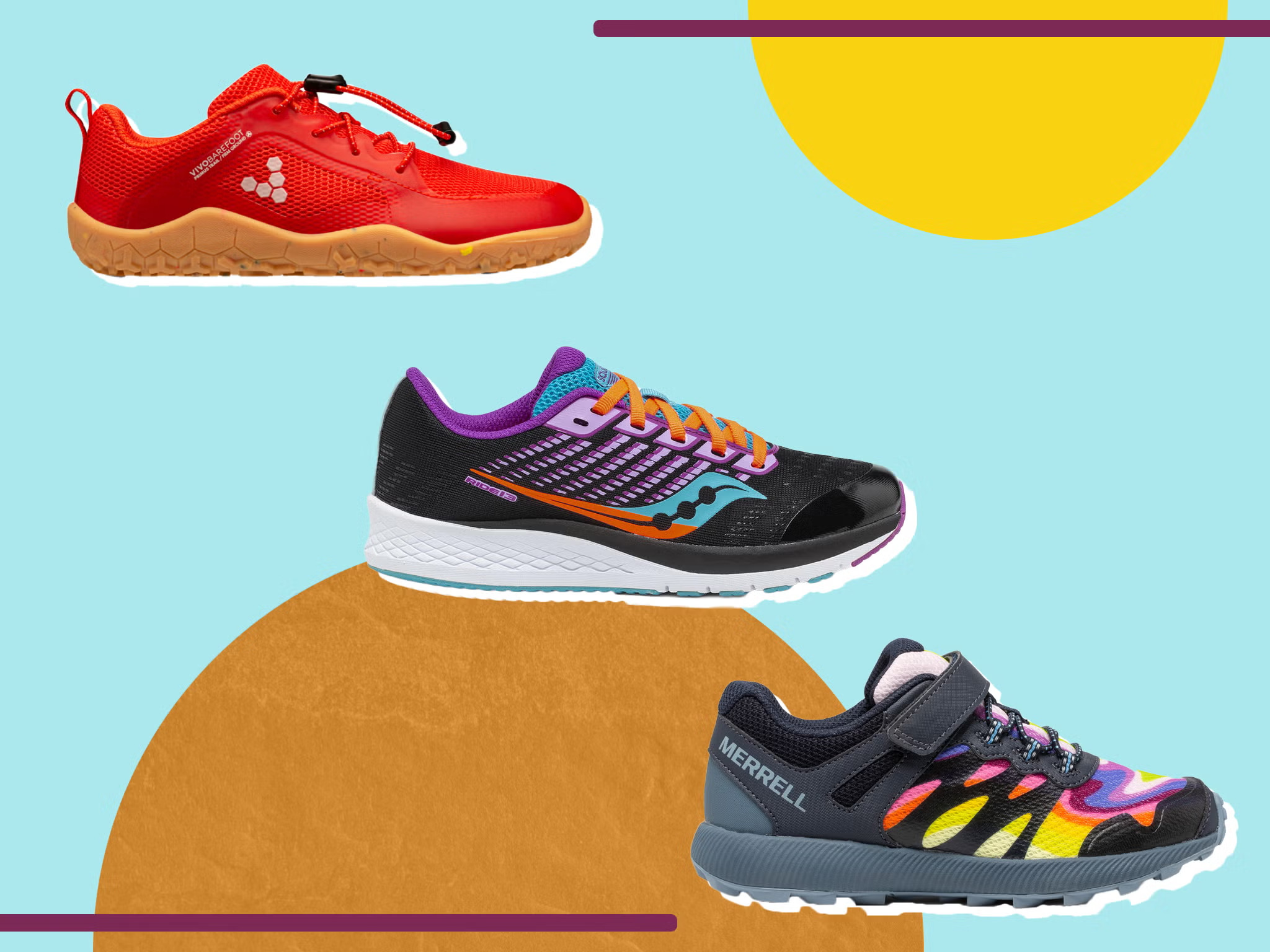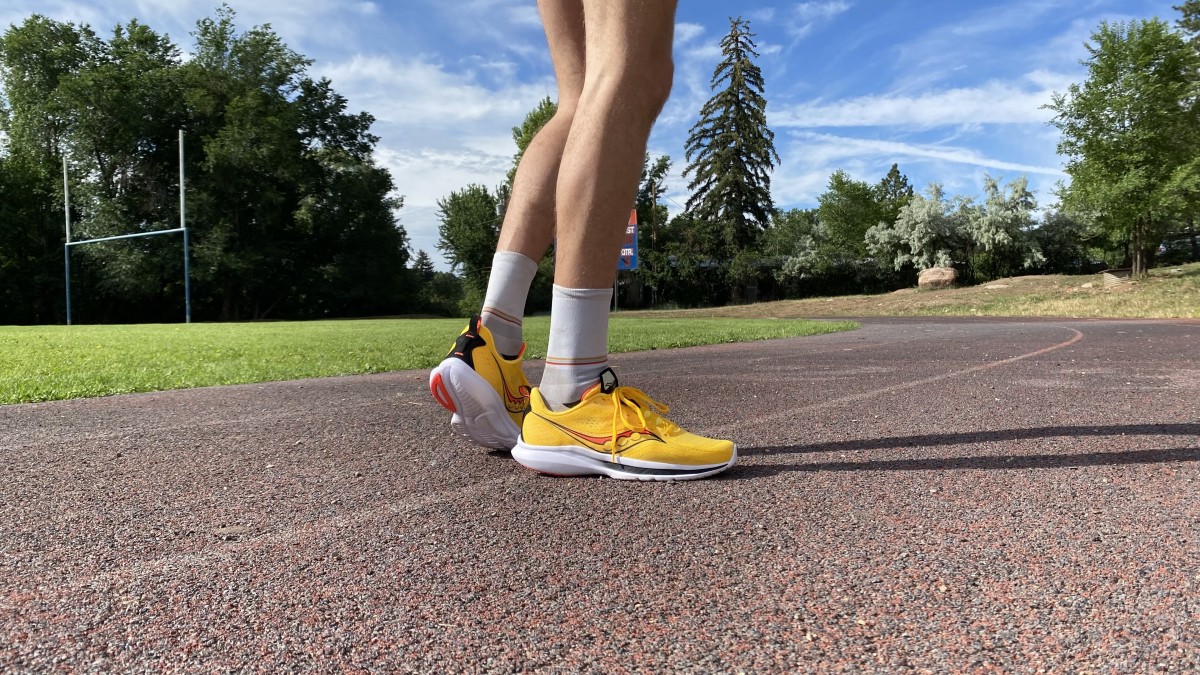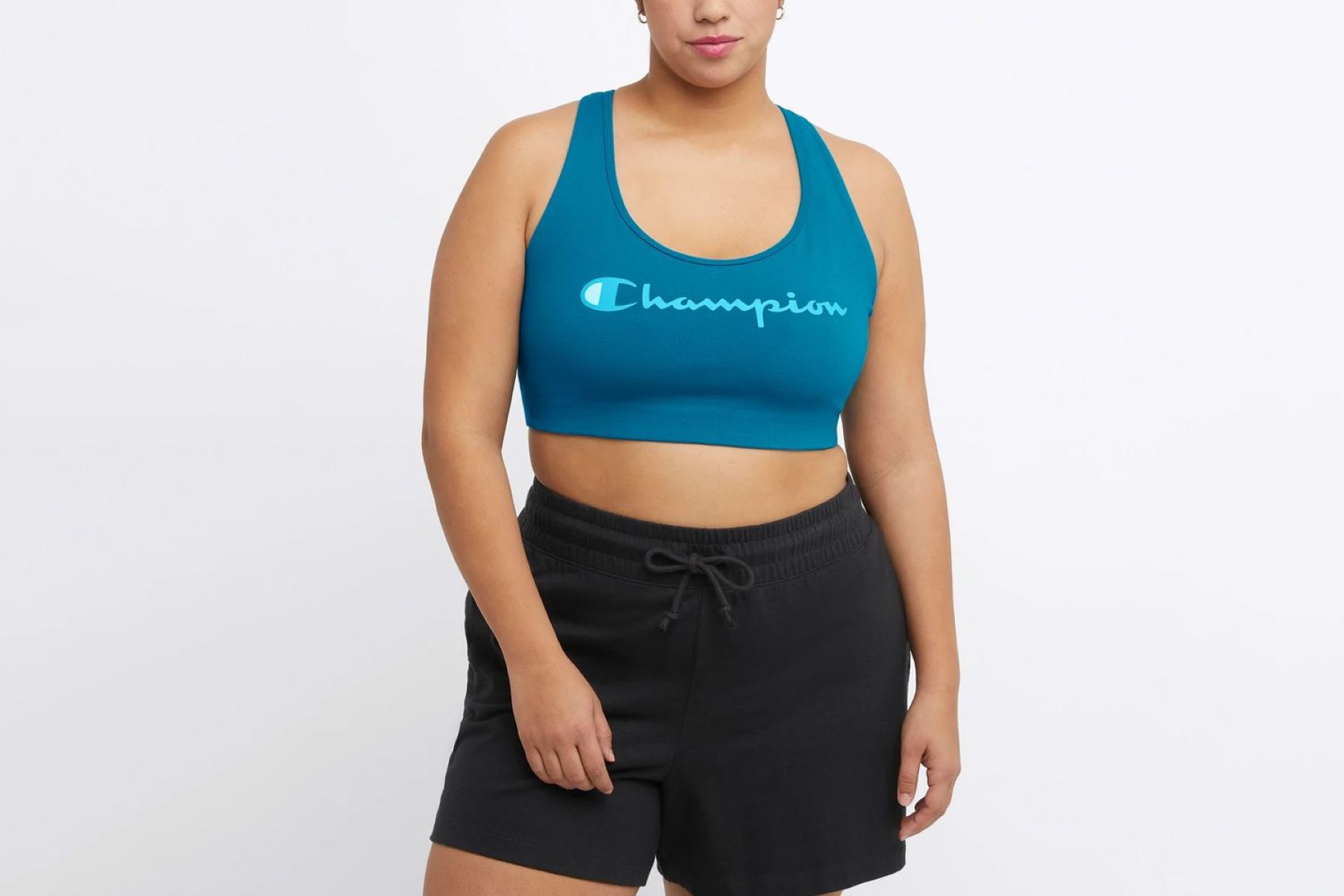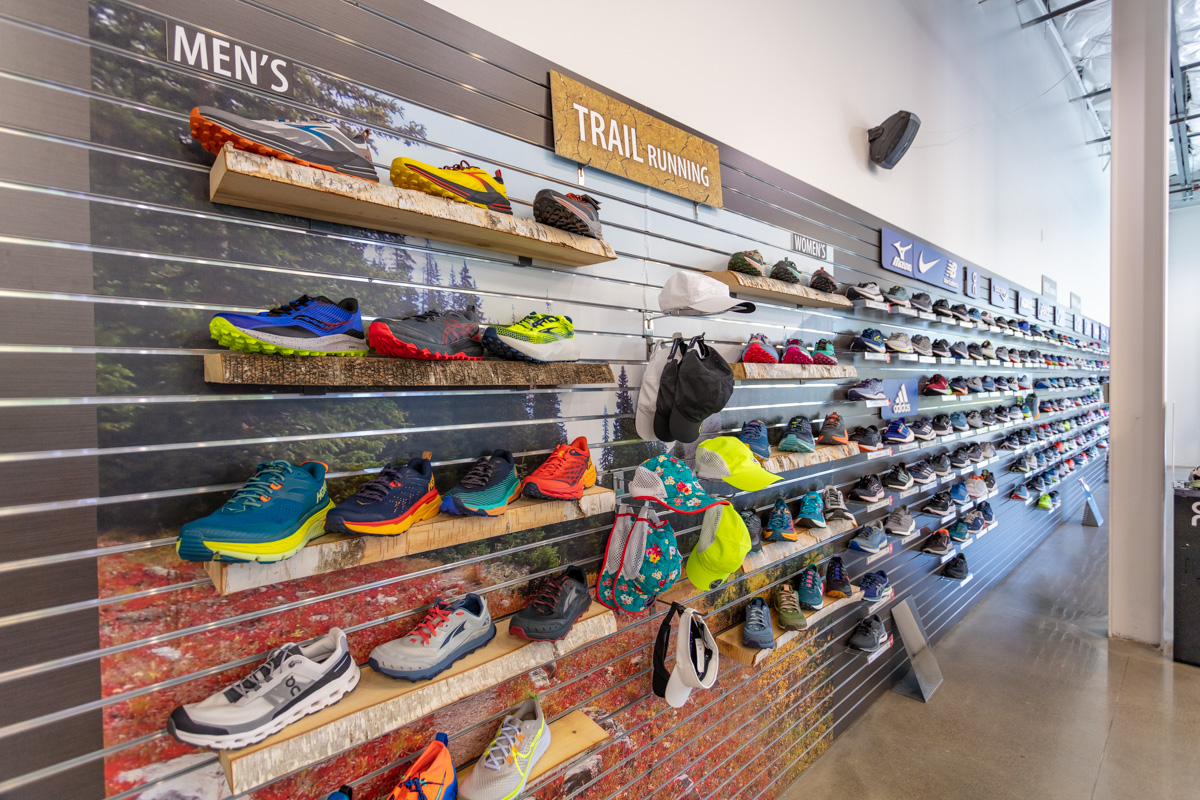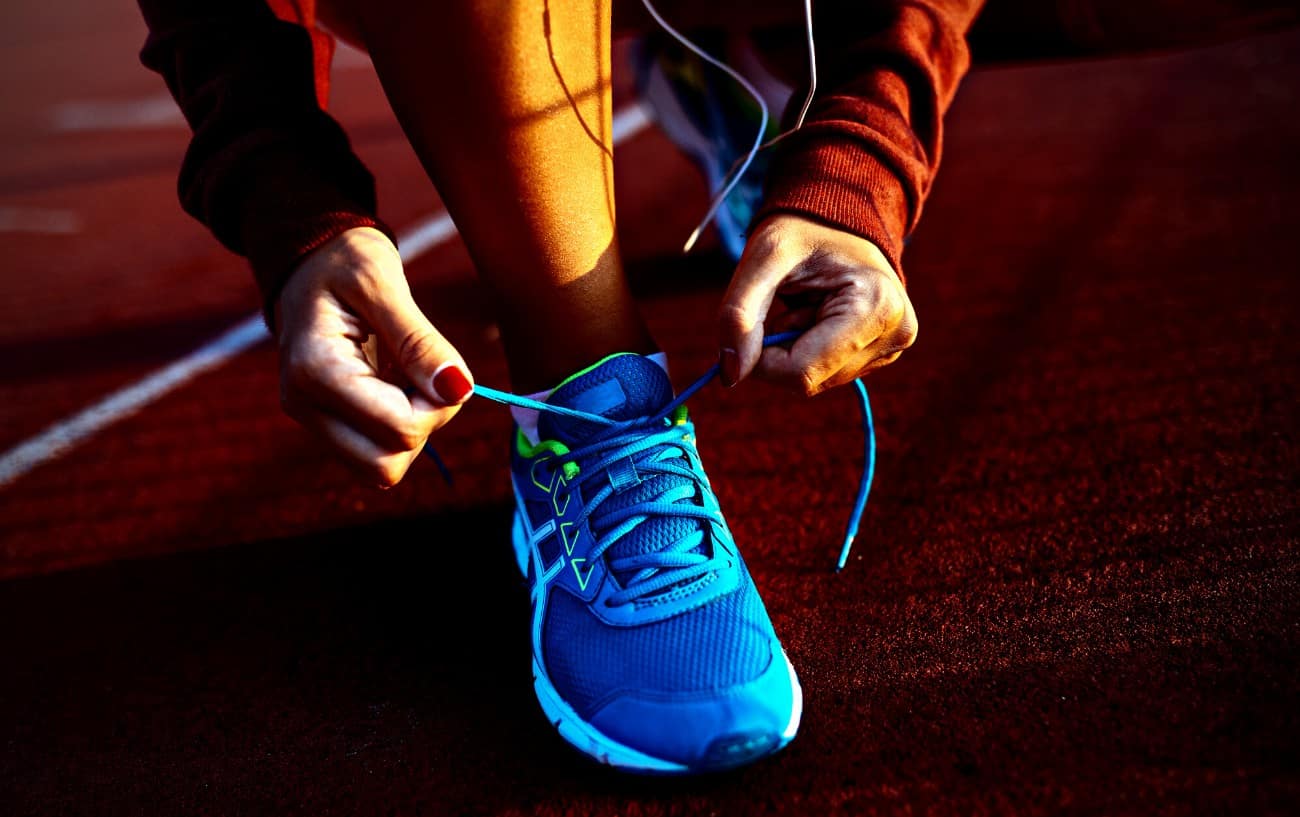Home>Misc>Product Reviews>Things To Look For When Buying Running Shoes
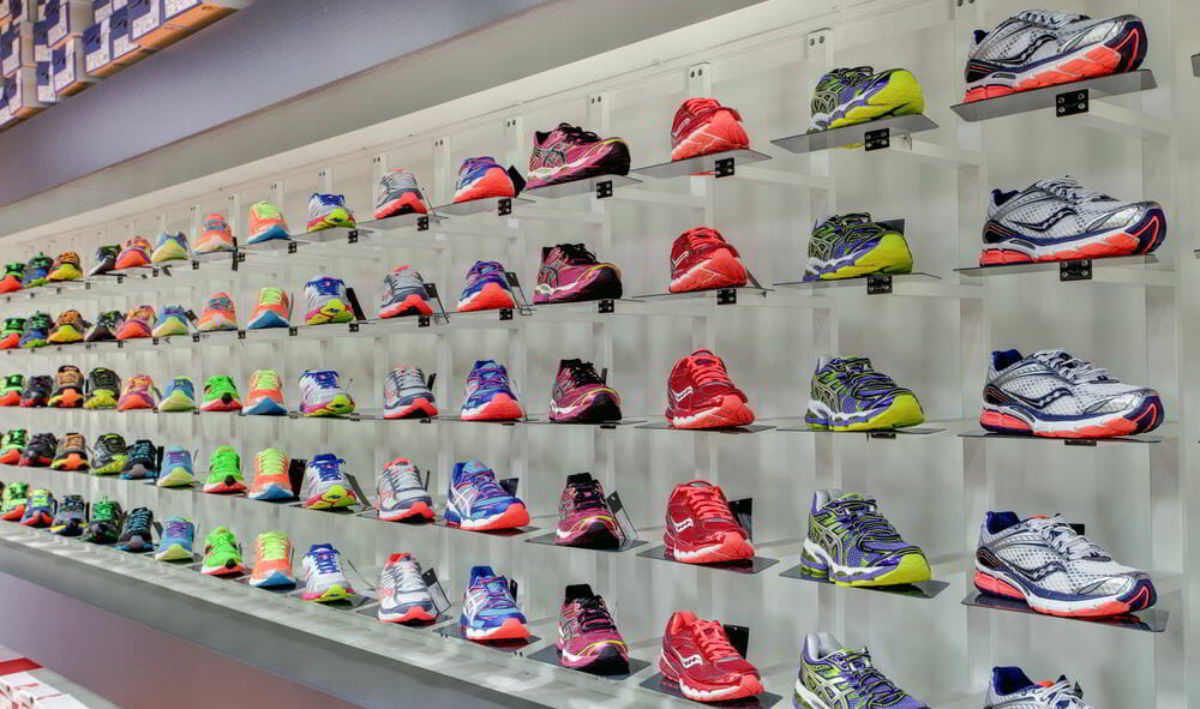

Product Reviews
Things To Look For When Buying Running Shoes
Modified: May 22, 2024
Find the best running shoes with our detailed product reviews. Discover the essential factors to consider when purchasing running shoes for optimum performance.
Introduction
Welcome to our comprehensive guide on things to look for when buying running shoes. Whether you are a seasoned runner or just starting out on your fitness journey, finding the right pair of running shoes is essential for a comfortable and injury-free experience. With so many options available in the market, it can be overwhelming to choose the perfect pair that suits your needs. That’s why we have compiled this list of important factors to consider before making your purchase.
Running is a high-impact activity that puts stress on your feet, ankles, and knees. A pair of well-fitting and supportive running shoes can help absorb shock, provide stability, and minimize the risk of injury. The right shoes can also improve your performance, allowing you to run further and faster with ease.
When it comes to buying running shoes, one size does not fit all. Different runners have different preferences and needs based on their running style, foot shape, and biomechanics. Therefore, it is crucial to consider multiple factors before making your decision. From fit and comfort to cushioning and durability, each aspect plays a significant role in finding the perfect running shoes for you.
In this guide, we will delve into these important factors and provide you with the information you need to make an informed choice. We will explore the importance of fit and comfort, the impact of cushioning and support on your running experience, and the role of stability and pronation control. Additionally, we will discuss the significance of factors such as breathability, durability, flexibility, weight, traction, and style in choosing the right running shoes.
By considering all of these factors and finding the perfect balance between them, you can ensure that your running shoes support your feet, enhance your performance, and withstand the demands of your running regimen. Let’s dive into the details and discover what to look for when buying running shoes.
Fit and Comfort
When it comes to running shoes, fit and comfort are the most crucial factors to consider. Ill-fitting shoes can lead to blisters, discomfort, and even contribute to foot and joint pain. Therefore, it is essential to find a pair of running shoes that fit your feet like a glove.
First and foremost, consider the length and width of the shoes. They should have enough space in the toe box to allow for natural movement and prevent your toes from feeling cramped. At the same time, they should fit snugly around the midfoot and heel to provide stability and prevent slipping.
It is recommended to try on running shoes in the afternoon or evening when your feet are slightly swollen, as they tend to expand during physical activity. This will ensure that you choose a size that accommodates your feet comfortably throughout your runs.
Additionally, pay attention to the materials used in the construction of the shoe. Look for shoes that are made with breathable and flexible materials such as mesh or knit uppers. These materials allow for better air circulation and help keep your feet cool and dry during your runs.
Another aspect to consider is the type of closure system. Whether it’s laces, Velcro, or a combination of both, ensure that the closure system allows for a secure and adjustable fit. This will ensure that you can customize the fit of the shoe to your liking.
Remember, everyone’s feet are unique, so what works for one person may not work for another. It’s important to try on multiple pairs and brands of running shoes to find the perfect fit for your feet. If possible, visit a specialty running store where experts can analyze your gait and suggest options that cater to your specific needs.
Overall, investing in a pair of running shoes that fit well and provide optimal comfort will make all the difference in your running journey. Not only will you be able to run with ease, but you will also greatly reduce the risk of developing foot injuries and discomfort. So, take the time to find the right fit and experience the joy of running in shoes that make you feel like you’re flying.
Cushioning and Impact Protection
When it comes to running shoes, cushioning and impact protection are vital factors to consider. The repetitive impact of running can put a significant strain on your joints and muscles, so having proper cushioning is essential to absorb shock and provide comfort.
The cushioning of a running shoe is typically located in the midsole, which is the layer between the outsole and the upper. This layer is usually made of materials such as foam or gel that are designed to compress upon impact and then bounce back to their original shape. The amount and type of cushioning can vary between different models and brands of running shoes.
Choosing the right amount of cushioning depends on your individual preferences and the type of terrain you typically run on. If you frequently run on hard surfaces like concrete or pavement, you may benefit from shoes with more cushioning to absorb the impact effectively. On the other hand, if you mainly run on trails or softer surfaces, shoes with less cushioning may be sufficient.
It’s important to strike a balance between cushioning and responsiveness. While excessive cushioning can provide excellent shock absorption, it may also result in a loss of energy return and responsiveness, making your runs feel sluggish. Conversely, minimal cushioning may enhance the responsiveness of the shoe but provide less protection from impact.
Consider your running style and biomechanics when selecting the right cushioning. If you have a tendency to land heavily on your heels, a shoe with extra cushioning in the heel area may be beneficial. On the other hand, if you have a more neutral stride, a shoe with even cushioning throughout the midsole might be suitable.
In addition to cushioning, impact protection is another crucial aspect to consider. Some running shoes incorporate features such as shock-absorbing pads or plates in the midsole to provide additional protection against sharp impacts, especially on rocky terrains or uneven surfaces.
Ultimately, finding the right balance between cushioning and impact protection will depend on your personal preferences and the demands of your running style. Experiment with different levels of cushioning and try out different models to determine which shoe provides the optimal balance for your needs. Remember, a shoe that effectively cushions and protects your feet will go a long way in enhancing your running experience and reducing the risk of pain or injury.
Arch Support
Arch support is a critical factor to consider when buying running shoes, especially if you have high or low arches. The arch of the foot serves as a natural shock absorber, helping to distribute your body weight and provide stability during running.
It is important to identify your arch type before selecting running shoes. There are three main types of arches: high arches, normal arches, and flat feet. High arches tend to have a more pronounced curve, while flat feet have little to no arch at all. Normal arches have a moderate curve that is neither too high nor too flat.
If you have high arches, you will benefit from running shoes that provide ample cushioning and support to help absorb the impact and distribute the weight evenly. Look for shoes with adequate arch support to stabilize the foot and prevent excessive strain on the arches.
For individuals with normal arches, running shoes with moderate arch support are generally sufficient. These shoes help maintain the natural alignment of the foot and provide a balance of support and flexibility.
If you have flat feet, running shoes with good arch support are essential. Flat feet lack the natural arch, which can lead to overpronation and increased stress on the joints. Shoes with built-in arch support will help compensate for the lack of arch and provide stability during the running motion.
It is worth noting that some running shoes have removable insoles or allow for customization with orthotic inserts. This can be beneficial if you have specific arch support needs or existing foot conditions that require additional support.
When trying on running shoes, pay attention to how the arch support feels against your foot. It should feel comfortable and supportive, without causing any discomfort or pressure points. Walk or run around in the shoes to ensure that the arch support aligns well with your foot’s natural arch.
By choosing running shoes with the appropriate arch support for your foot type, you can help maintain proper alignment, improve stability, and reduce the risk of foot and leg discomfort. Remember, everyone’s feet are unique, so finding the right arch support may require some trial and error. Don’t hesitate to seek professional advice or try on multiple pairs until you find the perfect fit for your arches.
Stability and Pronation Control
Stability and pronation control are crucial considerations when purchasing running shoes, as they play a significant role in preventing injuries and ensuring a comfortable running experience. Pronation refers to the natural inward rolling motion of the foot during the gait cycle, and excessive pronation can lead to instability and potential injury.
There are three main types of pronation: neutral pronation, overpronation, and supination (underpronation). Neutral pronation occurs when the foot rolls inward slightly to efficiently absorb shock. Overpronation happens when the foot excessively rolls inward, putting stress on the arch and potentially causing knee or ankle issues. Supination occurs when the foot rolls outward, leading to inadequate shock absorption and potential issues with the foot’s lateral side.
Choosing running shoes with the appropriate stability features can help correct or control the degree of pronation and maintain proper alignment. For runners with neutral pronation, a supportive yet flexible shoe with mild stability features will provide adequate support without hindering natural foot mechanics.
For those with overpronation, running shoes with motion control and stability features are essential. These shoes are designed with firmer midsoles and supportive structures to counteract the excessive inward rolling motion. Look for shoes with features like dual-density midsoles or medial posts that provide extra arch support and prevent overpronation.
Runners with supination need shoes with cushioning and flexibility to help absorb shock and encourage a more natural foot motion. Look for running shoes with ample cushioning in the midsole and a neutral or slightly curved shape, allowing for a smoother transition from heel to toe.
It’s important to note that not all flat-footed runners overpronate, and not all high-arched runners supinate. Individual foot mechanics can vary, so it’s crucial to have your gait analyzed and seek expert advice if you’re unsure about your pronation type.
Determining your pronation type and selecting running shoes with the appropriate stability features can help prevent injuries and enhance your running performance. Remember to try on different shoes and pay attention to how they support your feet and align your gait. Finding the right balance of stability and pronation control will provide the support you need to run comfortably and with reduced risk of overuse injuries.
Breathability and Moisture-Wicking
Breathability and moisture-wicking properties are essential considerations when choosing running shoes. Running is a high-intensity activity that can cause your feet to sweat, and if moisture is not properly managed, it can lead to discomfort, blisters, and even fungal infections.
When it comes to breathability, look for running shoes that feature mesh or knit uppers. These materials allow air to circulate freely around your feet, helping to keep them cool and dry. Shoes with breathable uppers prevent the build-up of sweat and heat, reducing the risk of discomfort and odor.
In addition to breathability, moisture-wicking properties are crucial. Look for running shoes with moisture-wicking liners or insoles. These help to draw moisture away from your feet, transferring it to the outside of the shoe where it can evaporate more easily. Moisture-wicking features help keep your feet dry and comfortable during your runs.
It’s important to note that different running shoes offer varying levels of breathability and moisture-wicking properties. Consider the climate and weather conditions in which you typically run. If you live in a hot and humid climate or run during warmer months, opt for shoes with enhanced breathability and moisture management features.
Keep in mind that socks also play a role in managing moisture. Look for moisture-wicking socks made of synthetic fibers like polyester or nylon, or consider specialized running socks that offer extra cushioning and breathability.
Proper breathability and moisture-wicking capabilities in your running shoes help prevent excessive sweating, reduce the risk of blisters and discomfort, and maintain a healthy environment for your feet. Breathable and moisture-wicking shoes contribute to a more enjoyable running experience, allowing you to focus on your performance rather than foot discomfort.
When trying on running shoes, assess how well they ventilate and manage moisture. Pay attention to how the materials feel against your skin and whether you experience any discomfort or excessive sweat accumulation. Finding running shoes that effectively manage moisture and offer proper breathability will greatly enhance your overall running experience.
Durability
Durability is an essential factor to consider when purchasing running shoes. As a runner, you put your shoes through a lot of wear and tear, so it’s important to choose a pair that can withstand the demands of your training and last for a reasonable amount of time.
The durability of running shoes depends on various factors, including the quality of materials, construction techniques, and the specific design of the shoe. Look for running shoes that are made with durable materials, such as reinforced mesh or synthetic overlays that can withstand abrasion and maintain their shape over time.
The outsole of the shoe plays a significant role in determining its durability. It is the part of the shoe that comes into direct contact with the ground and is subjected to the most wear. Look for running shoes with a durable rubber outsole that offers good traction and can withstand frequent use on different surfaces.
In addition to the materials used, the construction techniques used in making the shoe also impact its durability. Look for shoes that have reinforced stitching and well-sealed seams, as these contribute to the overall longevity of the shoe.
It’s worth noting that the durability of running shoes can vary depending on your running style, mileage, and the type of terrain you typically run on. If you’re a frequent long-distance runner or like to tackle rough terrains, you may need to invest in shoes with even greater durability.
Ultimately, the durability of a running shoe is a balance between its weight, cushioning, and flexibility. The more durable a shoe is, the more likely it may be heavier or less flexible. Therefore, it’s important to strike a balance between durability and the other features that are important to your running performance.
Reading reviews and feedback from other runners can also provide valuable insights into the durability of specific shoe models and brands. Keep in mind that everyone’s experience may vary slightly, but it can still give you a general idea of how well a shoe holds up over time.
By choosing a durable pair of running shoes that can withstand the demands of your training, you can feel confident that your investment will last and that you can rely on your shoes for many miles to come.
Flexibility and Range of Motion
Flexibility and range of motion are important considerations when selecting running shoes, as they directly impact your comfort and performance. A shoe with proper flexibility allows for a more natural foot movement, enabling a smooth and efficient running stride.
When looking for running shoes, consider the flexibility of the sole. The sole should offer a balance between flexibility and support. It should be able to bend and flex at the forefoot, allowing your foot to move naturally during toe-off, while still providing enough stability and structure to support your arch and prevent overpronation.
The flexibility of the shoe helps optimize your foot’s range of motion and contributes to a more efficient running gait. A shoe with excessive rigidity can hinder a natural foot roll and may lead to discomfort or restricted movement.
Flexibility is particularly important if you engage in activities that require more agility and dynamic movements, such as trail running or sprinting. In these cases, a more flexible shoe can enhance your performance and responsiveness.
It’s important to note that the level of flexibility and support needed in a running shoe may vary depending on factors such as your foot arch, running style, and the specific terrain you typically run on.
When trying on running shoes, pay attention to how they feel when you walk or jog. They should allow your foot to flex and bend naturally with each step. If the shoe feels stiff or restricts your range of motion, it may not be the best fit for you.
Additionally, striking a balance between flexibility and stability can help prevent injuries, especially if you have a history of ankle or foot issues. Running shoes with added features like heel counters or medial posts can provide additional support without sacrificing flexibility.
Ultimately, finding a shoe that offers the right amount of flexibility and range of motion for your specific needs will contribute to a more comfortable and enjoyable running experience, allowing you to move freely and efficiently.
Weight
The weight of running shoes is an important consideration that can significantly impact your running performance and overall comfort. Lighter shoes can help reduce fatigue and improve agility, allowing you to run faster and feel more responsive during your runs.
When it comes to weight, there is a trade-off between cushioning, durability, and support. Generally, lighter shoes have less cushioning and may not provide as much support compared to heavier shoes. However, advancements in shoe technology have allowed for the development of lightweight shoes without sacrificing too much cushioning and support.
The weight of running shoes is particularly important for competitive runners, sprinters, or those who prioritize speed and responsiveness in their running. Lighter shoes can help optimize your running efficiency, making it easier to maintain a faster pace and improving your ability to accelerate and change direction swiftly.
However, it’s essential to find the right balance for your individual needs. If you require more cushioning or have specific foot conditions that require additional support, you may opt for slightly heavier shoes that still prioritize comfort and protection.
During your shoe selection process, try on shoes of different weights and gauge how they feel on your feet. Pay attention to how responsive you feel while walking or running and consider the terrain you typically run on. For longer distances or trail running, you may prefer slightly more cushioned shoes, even if they are a bit heavier.
Keep in mind that the weight of the shoe can also vary based on size and other specific features. Some shoes may have additional features like extra cushioning, stability features, or reinforced materials that add overall weight.
Ultimately, finding the right weight for your running shoes depends on your personal preferences and running goals. Consider factors such as your running style, distance, and terrain, and how much importance you place on speed and responsiveness. Selecting shoes that strike the right balance between weight, cushioning, and support will help enhance your running experience and optimize your performance.
Traction and Grip
Traction and grip are important factors to consider when selecting running shoes, especially if you frequently run on various terrains or encounter unpredictable weather conditions. The right traction and grip ensure stability, prevent slips, and enhance your overall running performance.
The outsole of a running shoe is responsible for providing traction and grip. It is the part of the shoe that makes direct contact with the ground. Look for outsoles that are made of durable rubber with a pattern or a variety of lug shapes to provide multidirectional grip.
The tread pattern on the outsole affects traction on different surfaces. Shoes with deeper and more aggressive treads are beneficial for trail running or running in muddy or slippery conditions. These treads help to grip the terrain and prevent slippage.
For road running or running on smooth surfaces, shoes with a more shallow and evenly distributed tread pattern are suitable. These provide sufficient grip without collecting debris or compromising the smoothness of your stride.
It’s important to note that different shoes offer varying levels of traction and grip. Factors such as the type of rubber used, the design of the outsole, and the spacing between the lugs can affect the shoe’s performance on different terrain types.
When trying on running shoes, take note of how the outsole feels against different surfaces. Walk or jog on surfaces similar to those you typically run on to assess the shoe’s grip and traction. Consider the types of terrains you typically encounter and select shoes that are specifically designed for those conditions if necessary.
Additionally, consider the weather conditions you’ll be running in. If you often run in wet or slippery conditions, look for shoes that have water-resistant or waterproof properties to enhance grip and reduce the risk of slips and falls.
Regular maintenance of your running shoes is also essential to maintain optimal traction. Clean the outsoles regularly to remove any dirt or debris that may compromise grip. Over time, the outsoles may wear down, leading to decreased traction. Monitor the condition of your shoes and consider replacing them when the tread begins to wear out.
By choosing running shoes with excellent traction and grip, you can run with confidence and minimize the risk of slipping or losing control on various terrains. Prioritize shoes that offer the right level of grip for your running environment, ensuring a safe and enjoyable running experience.
Style and Design
While style and design may not be the top priority when selecting running shoes, they can still play a role in your overall satisfaction and motivation as a runner. Running shoes come in a wide range of styles and designs, allowing you to find a pair that not only performs well but also aligns with your personal aesthetic preferences.
One aspect of style to consider is color. Running shoes come in a plethora of colors, from vibrant and eye-catching to more subtle and neutral tones. Choosing a color that resonates with you can help boost your mood and make your runs more enjoyable.
Additionally, consider the overall design of the shoe. Some runners prefer a minimalist and sleek design, while others may prefer a more bold and unique look. It’s important to feel confident and comfortable in your running shoes, and selecting a design that resonates with your personal style can contribute to that sense of confidence.
However, it’s important to prioritize performance and comfort over style. While a visually appealing shoe may catch your eye initially, it’s crucial to ensure that the shoe meets your functional needs as a runner. The design should not compromise on factors such as fit, comfort, cushioning, and support.
It’s worth noting that some running shoe brands collaborate with fashion designers or incorporate trendy elements into their designs. By staying up-to-date with the latest trends in athletic footwear, you may find a shoe that not only performs well but also reflects the current fashion aesthetic.
Ultimately, the style and design of your running shoes should be a reflection of your personal taste and preferences. While it may not directly impact your running performance, wearing a pair of shoes that you find visually appealing can provide an extra sense of motivation and enjoyment during your runs.
Remember, prioritize performance and comfort first and foremost when selecting running shoes. But don’t hesitate to consider style and design as well, as they can contribute to your overall satisfaction and help you feel confident and motivated as you lace up those shoes and hit the road or trail.
Price and Value
Price is an important factor to consider when buying running shoes, and it’s essential to find a balance between your budget and the value you expect from your purchase. While high-end, expensive running shoes may offer advanced technologies and materials, it’s important to evaluate whether the price justifies the features and benefits it provides.
When determining the value of a running shoe, consider the durability, performance, and comfort it offers. A more expensive shoe that is built to last, provides excellent cushioning and support, and enhances your running experience may be worthwhile if you are a dedicated runner with specific needs or goals.
On the other hand, there are many affordable running shoes available on the market that provide excellent performance and value for your money. These shoes may not have all the bells and whistles of their higher-priced counterparts, but they can still offer adequate cushioning, support, and durability for most runners.
It’s important to evaluate your own running needs and goals to determine how much you are willing to invest in running shoes. Consider factors such as your running frequency, distance, intensity, and any specific requirements you may have due to foot conditions or running style.
Researching and reading reviews can also help determine the value of a specific running shoe. Look for feedback from other runners who have used the same shoe and assess whether it meets their expectations in terms of durability, performance, and overall satisfaction.
Keep in mind that while price is an important consideration, it shouldn’t be the sole determining factor. It’s not just about finding the cheapest option, but rather finding a shoe that offers the best value for your individual needs.
Consider shopping during sales or looking for discount codes to help you save money on running shoes without sacrificing quality. Additionally, consider the return policy of the retailer to ensure that you have the option to return or exchange the shoes if they don’t meet your expectations.
In summary, when considering the price and value of running shoes, weigh the features, performance, durability, and personal satisfaction against the price tag. Focus on finding a running shoe that offers the best value for your specific needs and budget, allowing you to enjoy your runs while making a sound investment in your running gear.
Conclusion
Choosing the right running shoes is essential for a comfortable and enjoyable running experience. By considering important factors such as fit and comfort, cushioning and impact protection, arch support, stability and pronation control, breathability and moisture-wicking, durability, flexibility and range of motion, weight, traction and grip, style and design, and price and value, you can make an informed decision that meets your specific running needs.
Remember the importance of finding running shoes that fit well and provide optimal comfort. The right fit prevents discomfort, blisters, and potential foot and joint pain. Cushioning and impact protection help absorb shock and enhance your performance, while arch support and stability features contribute to proper foot alignment and reduced risk of injury.
Consider the breathability and moisture-wicking properties of the shoes, as well as their durability and flexibility. Weight also plays a role, as lighter shoes can enhance your speed and responsiveness. Additionally, traction and grip are crucial for stability and confidence on various terrains.
While style and design may not be the most important aspect, finding shoes that suit your personal aesthetics can contribute to your motivation and overall satisfaction. Lastly, consider the price and value of the shoes, seeking a balance between your budget and the features and benefits they provide.
Ultimately, by taking the time to research, try on different shoes, and consider your unique preferences and running needs, you can find the perfect pair of running shoes. Remember that what works for one person may not work for another, so strive to find the shoes that align with your individual running style, foot shape, and biomechanics.
Investing in high-quality running shoes will not only improve your comfort and performance but also reduce the risk of injuries. Take care of your shoes and replace them when necessary to maintain optimal support and cushioning.
Now that you have a comprehensive understanding of what to look for when buying running shoes, lace up, hit the pavement, and enjoy your runs to the fullest!
